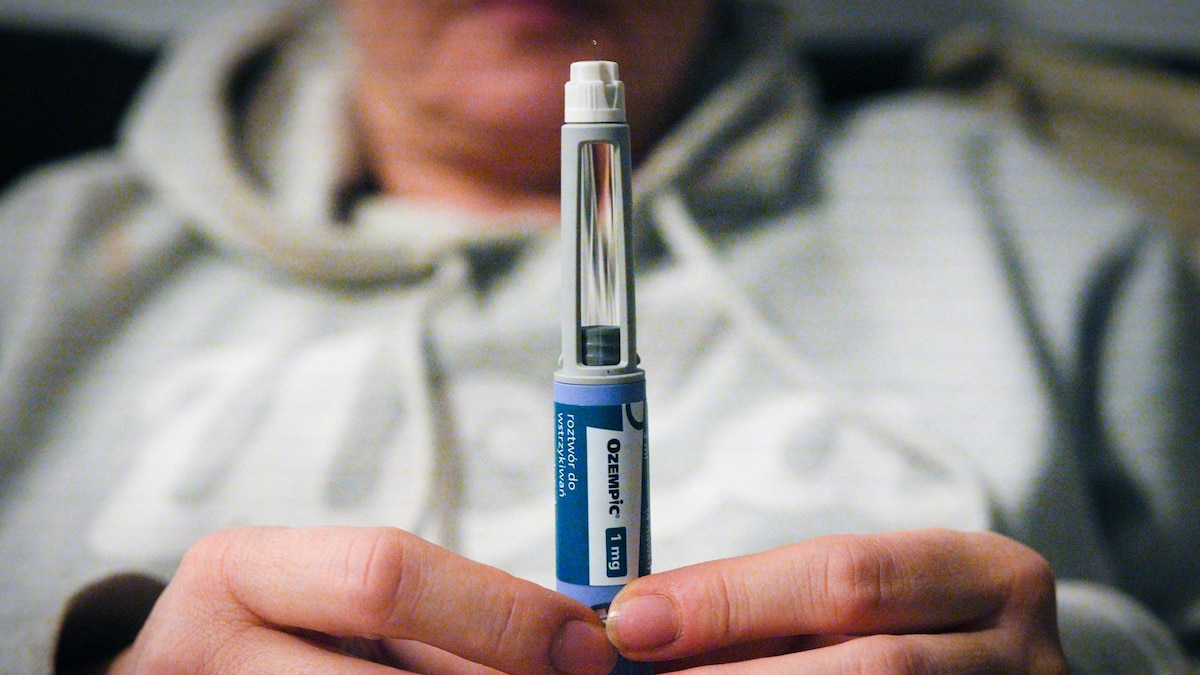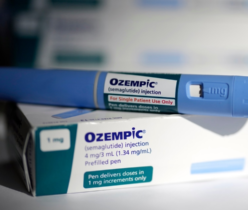Premium Content
Rapidly dropping pounds is associated with a loss of muscle mass and other undesirable effects—including looking older.
In recent months, the drugs Ozempic and Wegovy have been getting major buzz for helping people lose significant amounts of weight—fast. As they’ve dropped pounds and clothing sizes, some people have noticed surprising changes in their appearance, particularly what’s now being dubbed “Ozempic face.”
Another unexpected change is known as "Ozempic butt." These aren’t formal medical terms or diagnoses. These phenomena, which have gone viral on social media, have been tied to rapid weight loss while using glucagon-like peptide 1 agonists (like Ozempic and Wegovy). Those affected may end up with a gaunt, more wrinkled face (due to loss of facial volume and fat) or a saggy butt with loose skin (due to fat loss there).
“This is not unique to Ozempic by any means—this is a consequence of losing a lot of weight. You can get bariatric surgery face if you do it that way,” says Lawrence Cheskin, a professor and immediate past chair of nutrition and food studies at George Mason University and an adjunct professor of medicine at the Johns Hopkins School of Medicine. “There’s no special weight loss that happens in the face. It’s just more noticeable in the face because it’s always visible.”
Ozempic and Wegovy are the same drug—semaglutide (a GLP-1 agonist)—but they’re marketed differently: the U.S. Food and Drug Administration approved Ozempic to treat type 2 diabetes; Wegovy is for weight loss. Both require a prescription.
“These drugs are game changers because they are so effective regarding weight loss,” Cheskin says. Indeed, research has found that when adults with a body mass index of 30 or greater took a once-weekly injection of 2.4 milligrams of semaglutide, while also making lifestyle changes, they lost an average of 15 percent of their body weight over time.
But here’s the hitch: “When you lose weight quickly, you’re more likely to suffer from undesirable consequences,” Cheskin notes.
“With any kind of weight loss, you’re going to lose visceral fat [around the abdominal organs], subcutaneous fat [under the skin], and muscle,” says Caroline M. Apovian, an obesity medicine specialist and codirector of the Center for Weight Management and Wellness at Brigham and Women’s Hospital. “The fat comes off everywhere. There’s a genetic predisposition to where you’re going to lose it first.”
Research shows that genetic factors determine up to 60 percent of where body fat is distributed, regardless of whether someone has a normal weight or carries excess pounds.
And as countless disappointed dieters have discovered over the years, it’s just not possible to control where the body sheds excess fat with weight-loss interventions.
“We can’t spot reduce where weight loss comes from,” says Robert Kushner, an obesity medicine specialist and professor in the department of medicine and medical education at the Northwestern University Feinberg School of Medicine in Chicago.
(Ozempic and Mounjaro have another benefit: treating inflammation)
Where you’re likely to lose subcutaneous fat will depend at least in part on genetic factors and on your diet quality. The good news is, if you lose a substantial amount of weight, visceral fat around the organs—including the liver, kidney, and heart—will be reduced, which can help these organs function better, Apovian says. “There’s no doubt: You’re going to be metabolically healthier.”
In addition, inflammation will decrease in the joints, she adds, and so will the pressure that’s put on them. “If you lose 10 pounds, it’s like taking 30 pounds off the joints,” says Cheskin. Besides easing wear and tear on the joints, getting to a lighter weight can improve someone’s mobility because they’re moving less weight.
The unfortunate news: Losing weight rapidly is associated with a loss of muscle mass, says Kushner. “That’s not good because it can lead to weakness, fatigue, and sarcopenia”—a gradual loss of muscle mass and strength that occurs with aging. You want to prevent or delay that downturn as much as possible, which is why sufficient protein intake and regular strength-training are essential during weight loss.
In addition, skin changes and hair loss can occur with major downsizing. “The more rapid the weight loss and the greater the calorie deficit, the more the body starts downregulating systems that aren’t essential [for survival],” Kushner says. This can lead to pauses in cell proliferation in the hair, nails, and skin, resulting in hair loss, brittle nails, and loss of elasticity in the skin. These functions will eventually recover but it’s likely to take time.
In the meantime, facial changes may include skin laxity, especially in the temples, tear troughs, and jawline, as well as more prominent wrinkles, notes Elizabeth O’Neill, a plastic and reconstructive surgery resident at Rush University Medical Center in Chicago. “People want to lose fat but they don’t realize fat is what makes us look youthful.”
Research has found that people who experience massive weight loss can look up to five years older in their faces than their age-matched peers do.
By contrast, “if you lose weight slowly, you can avoid these changes to skin and hair to some extent,” Cheskin says. “It gives your skin more time to adapt and contract.”
To prevent rapid weight loss, doctors can prescribe a lower dose of these drugs and slowly escalate it, if necessary.
“If you’re on these medications, you need to be under the care of a medical professional to monitor the dose and proper rate of weight loss,” Kushner says.
Another option may be to switch drugs: “If you’re losing weight too fast on Ozempic, you could switch to Mounjaro [a drug that’s a combination of a GLP-1 agonist and a glucose-dependent insulinotropic polypeptide] or vice versa,” Cheskin says. “People have different responses to different drugs even if they’re in the same class.”
Medications aside, it’s important to consume a well-balanced diet, with plenty of nutrient-rich fruits, vegetables, low-fat dairy, whole grains, and lean protein, and drink plenty of water to keep your skin and other tissues hydrated. It’s best to distribute your protein intake evenly throughout the day to preserve muscle mass during weight loss, research suggests.
For the sake of muscle maintenance during weight loss, Apovian recommends consuming 1-1.5 grams of protein per kilogram of body weight. For someone who weighs 160 pounds, that amounts to 73 to 109 grams of lean protein per day. (One kilogram equals 2.2 pounds so to calculate your protein intake, divide your weight in pounds by 2.2 then multiply the resulting number by 1 and 1.5 and you’ll get a range for your recommended protein intake).
Another must-do measure: Getting plenty of physical activity, a combination of resistance or weight training two to three times per week to help you maintain muscle mass; and regular aerobic exercise for the sake of your cardiovascular health and weight-loss maintenance, Apovian says.
(The unexpected health benefits of Ozempic and Mounjaro)
If despite taking these precautions, you do end up with Ozempic face, you could consider having injectable dermal fillers (like those made with hyaluronic acid) to restore volume in the face that was lost with weight reduction. The results of these cosmetic procedures aren’t permanent but they can be repeated. They are quick, but they are not covered by insurance, O’Neill notes.
Plastic surgery—including facelifts, neck lifts, brow lifts, and body contouring procedures, such as tummy tucks or butt augmentation—also may be an option down the road. But doctors want people to be at a stable weight for 12 to 18 months before having these surgical procedures because further weight loss or regain could compromise the results.
Ultimately, obesity medicine specialists believe these cosmetic changes are a small price to pay for using these revolutionary medications. After all, with the exception of muscle loss, these are appearance-related concerns, not medical ones.
“These are lifesaving drugs,” says Apovian. “If these drugs become more available, we’re going to change the face of society because we’re going to stop the obesity epidemic.”


